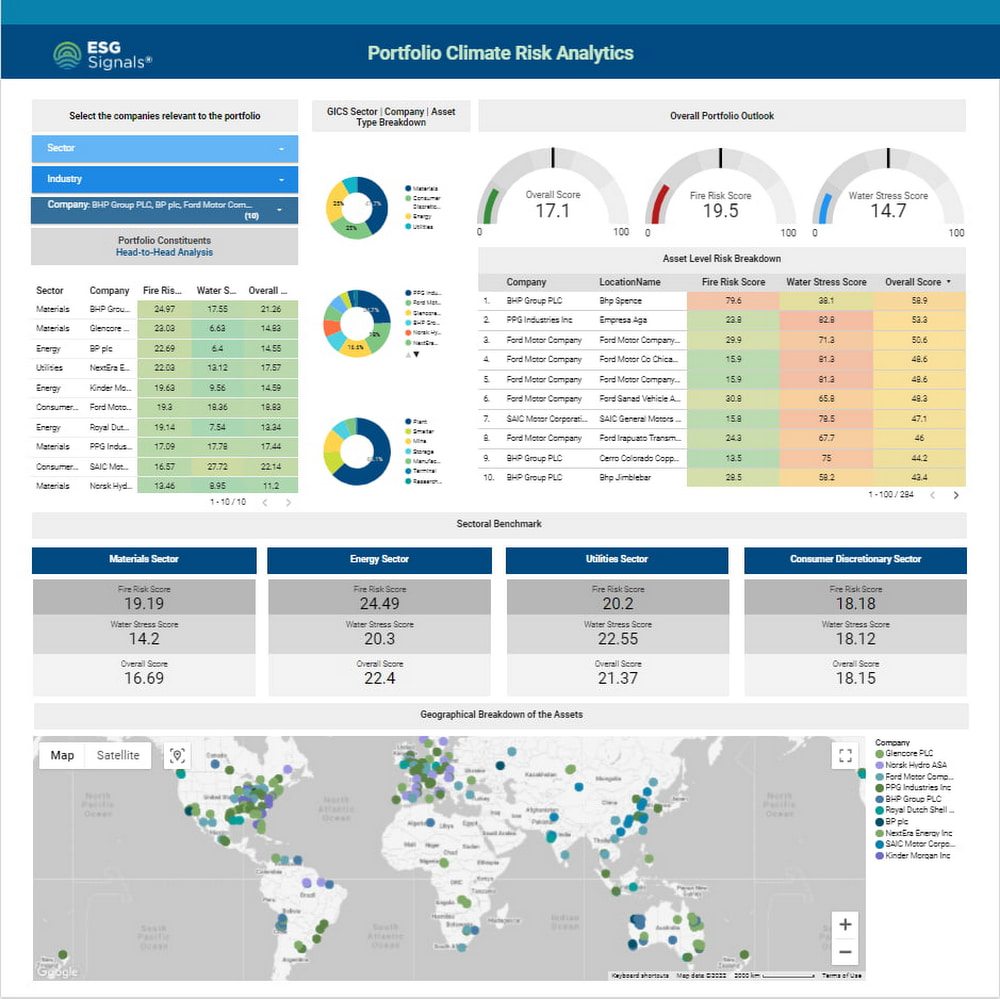
Live from COP27, Egypt: A cloud’s eye view
Editor's note: At Google Deject we’re working with global organizations to help them use technology to build a increasingly sustainable future. We’re excited well-nigh the 2022 United Nations Climate Transpiration Conference, or COP27, when representatives from countries and organizations virtually the world — including Google Deject — are gathering in Sharm El-Sheikh, Egypt from November 7 - 18, 2022 for the latest round of climate talks. Bookmark this blog as we bring perspectives from onsite, thoughts from Google experts and customers, curated content and announcements. Catch the event for yourself on Youtube.
Day 11: On Solutions Day, urgency and opportunity in a time of crisis
By Justin Keeble, Managing Director, Global Sustainability Solutions
Economic disruption, natural disasters and lattermost weather, and inflation are at the top of the list of today's global challenges. To solve them, we must reset the way we write these issues.
Energy is one thing they all have in common, and our unfurled prosperity ultimately depends on deep structural changes towards sustainability. This should be addressed from the positive perspective of utilizing resources, innovation, and, yes, urgency. We have many reasons to expect positive results. Here are three:
1. Improving productivity
Over the past several years, the world has invested increasingly in largest energy production, methods, and materials. This whimsically utilizes all of the scientific, managerial, and computational advances we've made during the same time.
Some increased spending on renewables in the U.S., Europe, and Asia follows a longer trend. Some is due to the mismatch in Ukraine, which underscored the hazard of fossil fuel dependence. Either way, there are opportunities to learn plane increasingly well-nigh sustainability and productivity, in areas like home improvement, retooling the manufacture of automobiles and other goods, and largest power distribution. New technological insight and productivity are possible by things like machine learning and augmented reality.
2. New Merchantry Models, New Growth
New merchantry models are once evolving towards upper productivity and lower stat usage. In retail, there are e-commerce platforms like Nuuly, Urban Outfitter's suit rental and resale business. Financial services companies are specializing in computer-assisted climate finance & ESG portfolio management. There are innovations in the power sector, like portfolio rotation, stat intelligence, and stat removal. In transportation, innovation is moving vastitude electric vehicles to data-rich squadron optimization at companies like Geotab. Plane as legacy companies are transforming, new businesses are evolving.
3. Resilience, Regulation, and Risk
This summer the Rhine River ran so low that Germany’s manufacturing industry was threatened with shortages of essential feedstock. Climate disasters like fires, floods, and soil erosion that take agricultural land, driving supplies scarcity and causing mass migrations. Companies must understand such new climate risks, then act to build resilience. Google Deject has partnered with Climate Engine to bring visibility to these vigilant risks and help operational leads make constructive decisions well-nigh risks 3-6 months superiority of time.
In addition, we are seeing increasing regulation of stat emissions, and insufficient whoopee by companies focused on the short term. Last year Accenture estimated that just 5% of companies in Europe were on track to meet the commitments of the 2015 Paris Climate Agreement to be zero stat by 2050. Leaders need to opt in now to track, measure, and report key metrics and milestones. Climate is a data challenge, and once organizations tap into technology solutions that can help them garner insights from their data, they’ll be worldly-wise to make increasingly meaningful progress.
Good work is rarely easy. The IMF states that fighting climate transpiration will require massive global investments. In my quarter-century of working on sustainable energy programs, however, from citywide energy efficiency, to volitional transport fuels, and improving utilities, I've found that perspective and transferral are most hair-trigger to success. Leaders who succeed will take personal responsibility for these commitments. They will see largest performance, largest employee satisfaction, and largest regard from partners and customers.
More from Solutions Day, NGIS shares how government and corporate commitments progress climate solutions
By Nathan Eaton, Managing Director, NGIS
Leaders are currently gathering for COP27 in Egypt with the goal of delivering substantive outcomes that write climate change. Last week at COP, 13 global leading supplies and thingamabob businesses renewed their pledge to end deforestation and help reduce global warming. As corporations protract to extend commitments to sustainability, legislation can help solidify these commitments and remoter progress.
In September, a significant snout was passed in the European Parliament to ban imports of raw materials that have been linked to deforestation, taking a huge step forward in reducing global deforestation. The legislation includes commodities such as cattle, cocoa, coffee, palm oil, soy, and wood. This initiative is part of the European Untried Deal, which paves the way for Europe to unzip stat neutrality and to transform the EU into a competitive and resource-efficient economy.
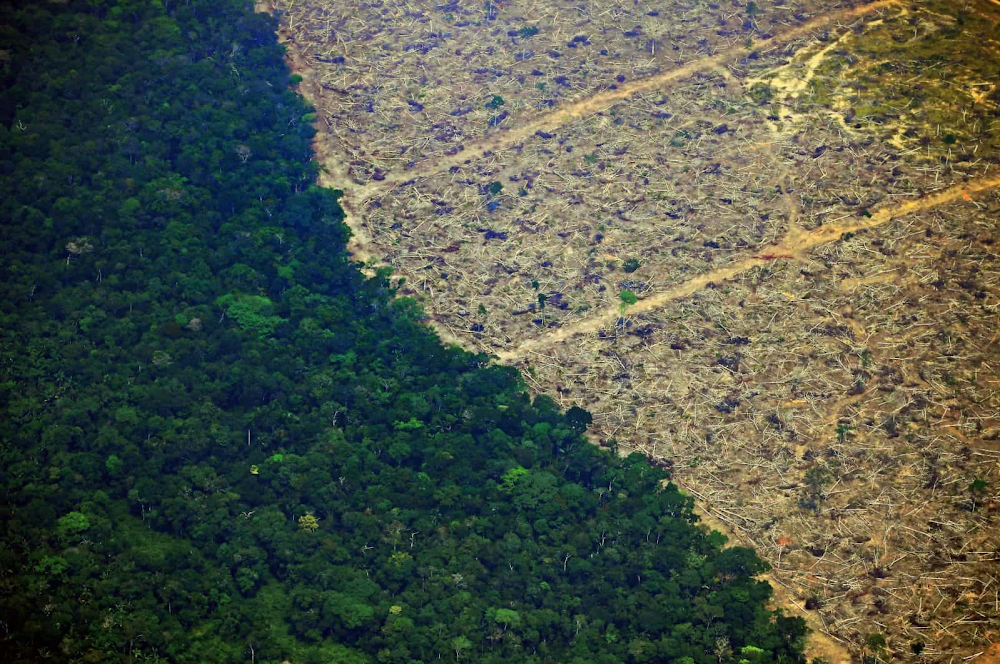
The new legislation will guarantee consumers that the products they buy do not contribute to the destruction of forests. Under the new law, any raw materials produced on land deforested without 31 December 2019 will be prohibited. EU consumption finance for virtually 10% of global deforestation with palm oil and soy stuff the biggest contributors.
The snout is significant as consumer packaged goods companies will need to verify that the raw materials sourced from suppliers are deforestation self-ruling and not just from certified sources. This due diligence will be implemented through legislation and will need the use of satellite monitoring, field surveys and supplier engagement to have the first mile traceability that will be required by the EU. This step transpiration will need the use of innovative and scalable digital solutions to unhook the first mile traceability.
NGIS and Google have been partnering with progressive global companies to unhook solutions that provide the capabilities that will in the future be legally required by the EU for deforestation self-ruling supply chains.
NGIS’s sustainability solution, TraceMark, is built on Google Deject Geospatial technology and delivers wangle to enormous data archives and wringer at scale that will be needed to unhook supply uniting due diligence.
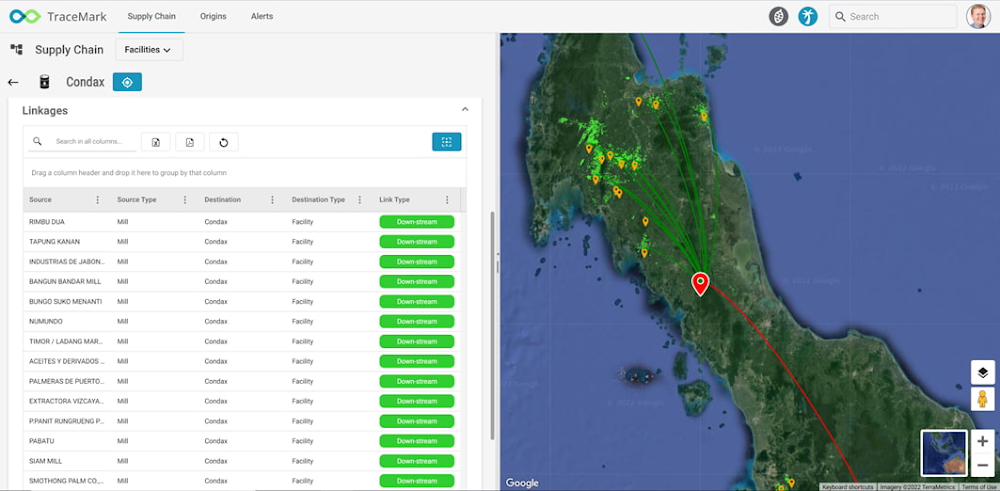
Capabilities include:
- Supply uniting mapping and first mile verification
- Global monitoring of deforestation, including early warning alerts indicators
- Supplier engagement and data sharing ecosystems
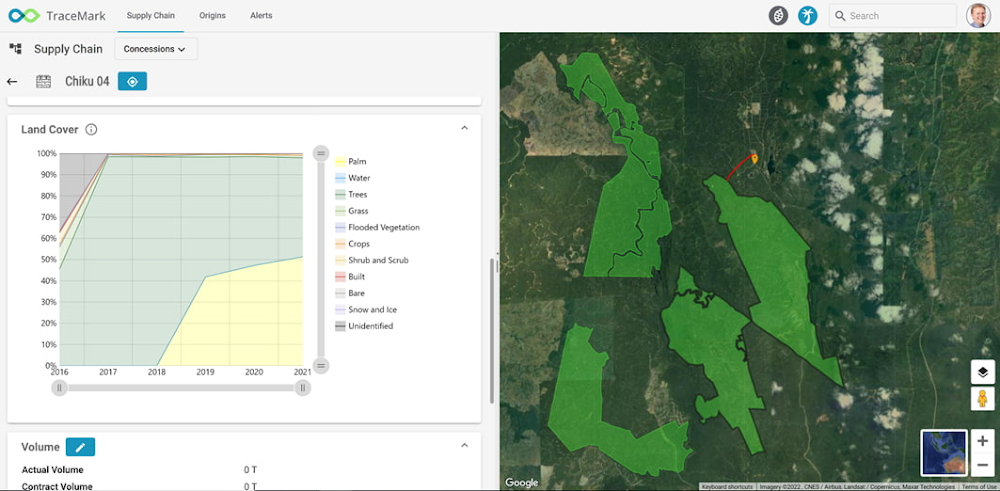
A geospatial, first mile tideway to sustainability will be at the heart of this initiative as well as many other climate transpiration innovations. The use of geospatial technology allows the integration of enormous data archives based on location, integration that wouldn’t be possible with other techniques. Google has been at the forefront of geospatial innovation with Google Earth and Google Maps democratizing digital mapping.
About NGIS
NGIS is a Google Premier partner, specializing in geospatial, climate and sustainability solutions and was named the 2021 Global Google Deject Industry Solution Partner of the Year.
NGIS’s team of GIS Analysts and developers leverage world-leading satellite imagery with the processing power of Google Cloud, BigQuery and Google Earth Engine, and have ripened a product that empowers corporations to wilt increasingly subject for the impact of their operations and identify how to largest write sustainability commitments.
NGIS is now engaging with Twinning’s, Kerry, Barry Callebaut, Kimberly Clark, General Motors, Rainforest Trust, and other companies looking to reach their sustainability goals globally.
About TraceMark
TraceMark is a sustainable solution platform that delivers global deforestation monitoring withal with implementing traceability and transparency for the sourcing of raw materials.
Day 10: On Biodiversity Day, we’re sharing three deject tools for protecting habitats and wildlife
By Alexandrina Garcia-Verdin and Tanya Birch, Geo for Environment at Google
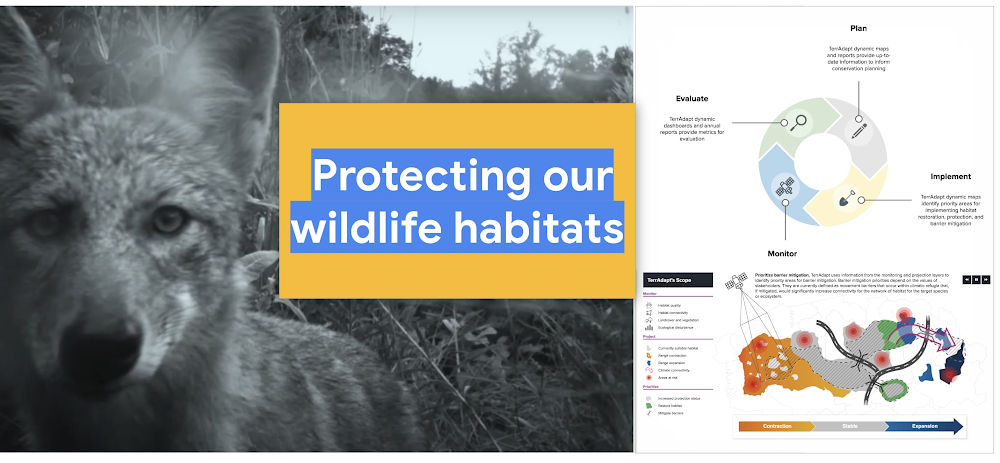
In wing to decarbonization, one of the goals of COP27 is to protect natural habitats and wildlife species. Recent advancements in technology have a big role to play here:
There’s greater serviceability of satellite imagery and species data.
It’s easier than overly to create custom map applications.
Machine learning models are misogynist that measure changes automatically on the Earth with unconfined accuracy.
Having near-real time tools both in the sky and on the ground is key to quantifying the unvarying changes occurring in landscapes, expressly those due to human worriedness and climate change. In the past, land managers made policy recommendations based on the best-available data, but by the time they arrived at a visualization maker’s desk, the data was out of date. Tools like Google Earth Engine use frequently updated satellite data, and supports crowd-sourced data, such as images of wildlife in peoples’ backyards. Researchers can use this data to quickly generate (and map) indicators of species and habitat health, to measure the success of protection or restoration efforts. And machine learning models help translate large amounts of climate, weather and geospatial data into trends and predictions.
When people combine their passion for solving globally-complex environmental challenges with technical and project management skills, we can profoundly slide progress. TerrAdapt.org, WildlifeInsights.org, and Restor.eco are three good examples of this. Built on Google Earth Engine andGoogle Cloud, read on for a quick summary of each of these projects, and ideas on how you can leverage them,
TerrAdapt
The challenges we biodiversity researchers squatter are focused on delivering out research quickly, and ensuring it gets to decision-makers in time.
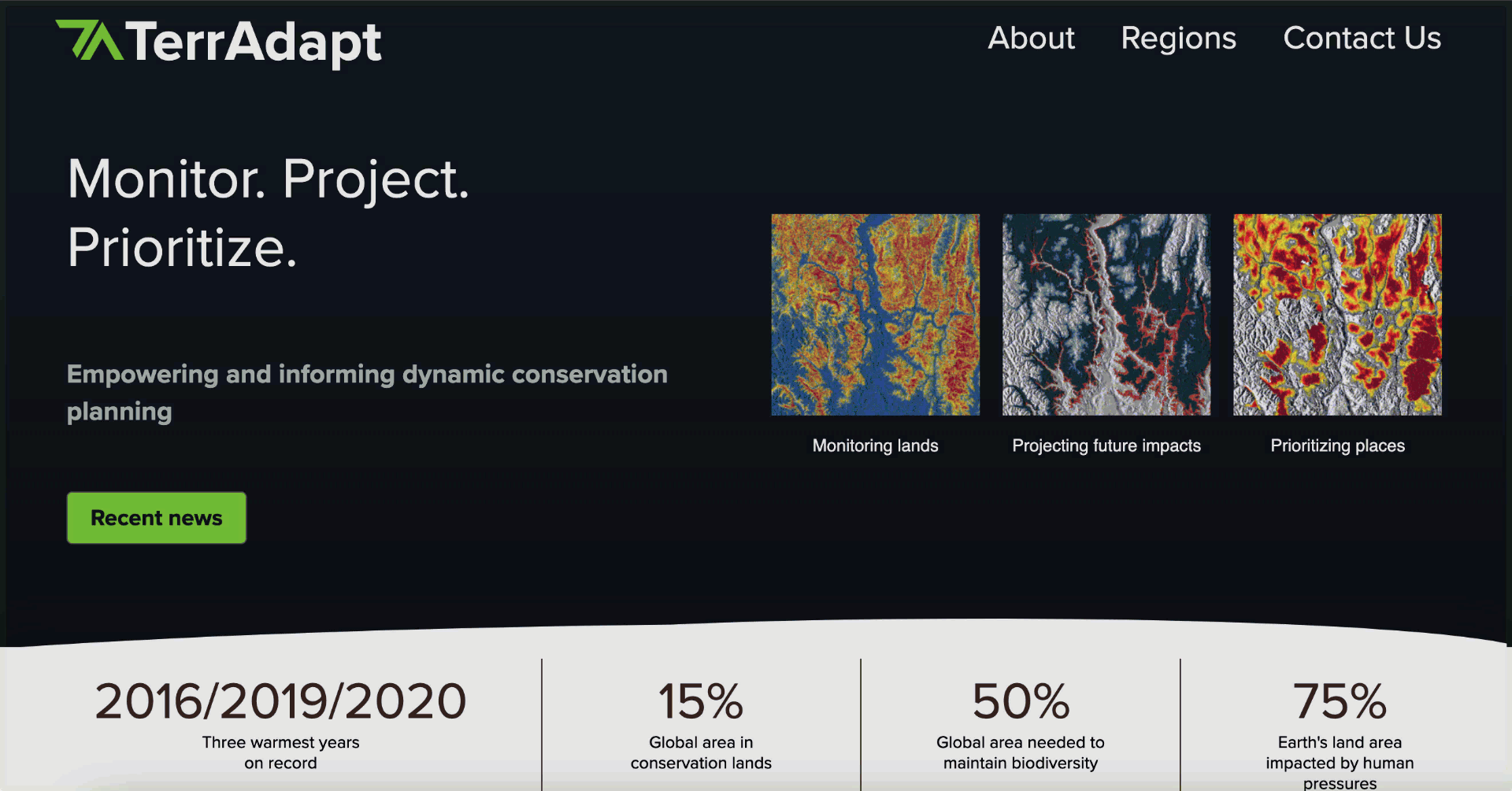
Habitats are shifting rapidly as the planet warms. TerrAdapt.org helps government agencies, land managers, local communities and conservationists to monitor these changes dynamically wideness regional political boundaries and project future climate and land-use scenarios to inform priority species and habitat plans. TerrAdapt partners with land managers to quantifiably measure land disturbances and help them wangle dynamically updating data so they can prioritize areas for conservation and habitat connectivity (such as wildlife corridors).
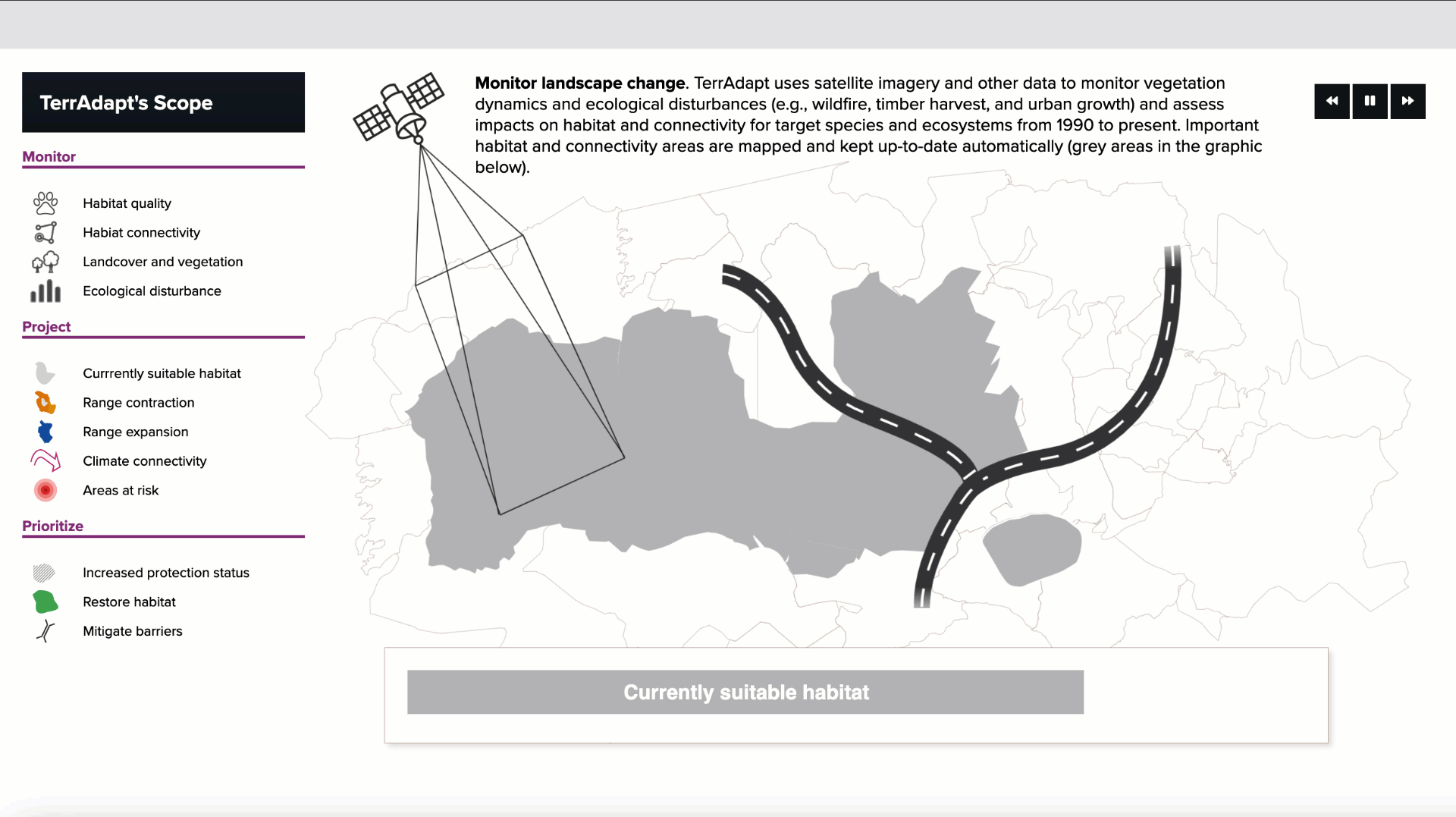
Now, with the help of tools like Google Earth Engine, which offers commonly updating satellite imagery, scientists can bring updated data layers to land managers so we can increase climate resilience for plants, animals, and human communities that depend on our natural landscapes. TerrAdapt is a platform offering updating datasets for adaptive management decisions.
Additional resources: log: Using TerrAdapt to monitor wolverines
Wildlife Insights
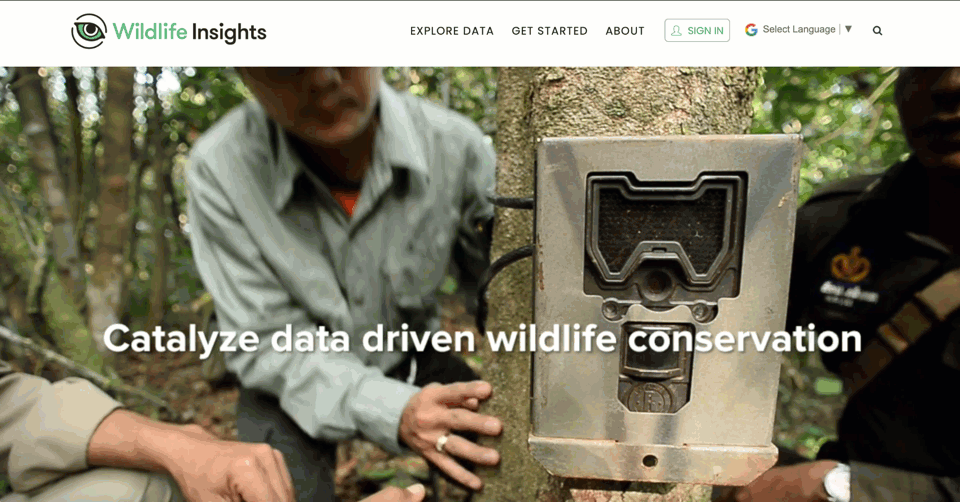
Wildlife Insights is a tool built on Google Deject that enables anyone with motion-triggered camera-trap data to identify the species in the images using AI. It moreover allows people to explore wildlife images from all over the globe. Ultimately, Wildlife Insights helps protected zone managers measure the impact of their conservation decisions, and learn whether biodiversity is increasing or decreasing in a region.
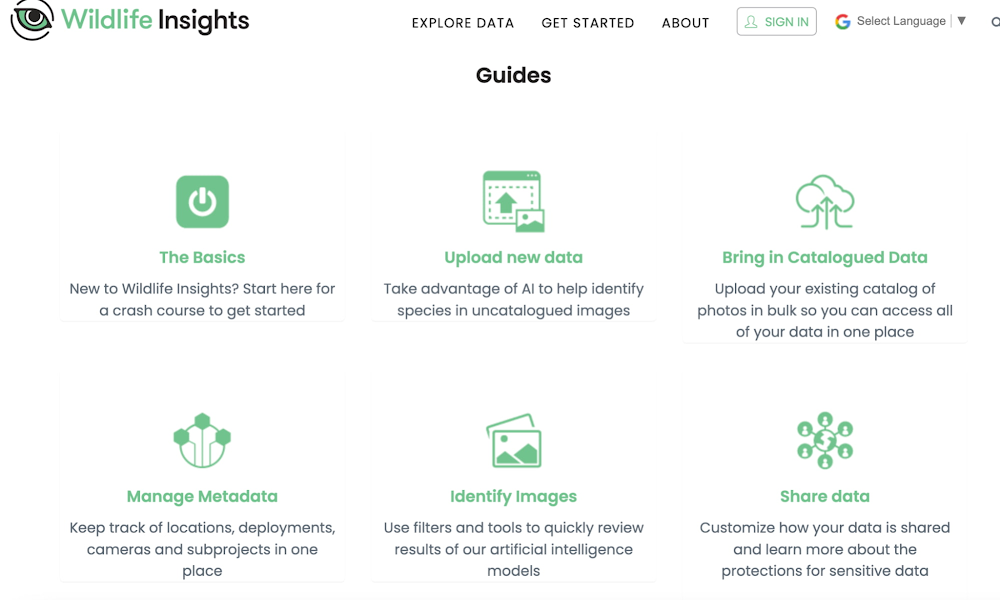
Historically, many conservation organizations placid wildlife data using camera traps, including Wildlife Conservation Society, Smithsonian Conservation Biology Institute, North Carolina Museum of Natural Sciences, WWF, Zoological Society of London, and Conservation International. These expert-labeled images presented a unconfined training dataset for computer vision models trained on the TensorFlow framework, and today, the resulting AI models drastically reduce the time researchers spend processing camera trap images. In wing to species identification, Wildlife Insights makes it easier for conservation biologists and land managers to share species data with one another, so they can largest understand wildlife populations and their distribution wideness landscapes.
Additional resources: (blog) How Wildlife Insights captures the eyeful & fragility of biodiversity
Restor.eco
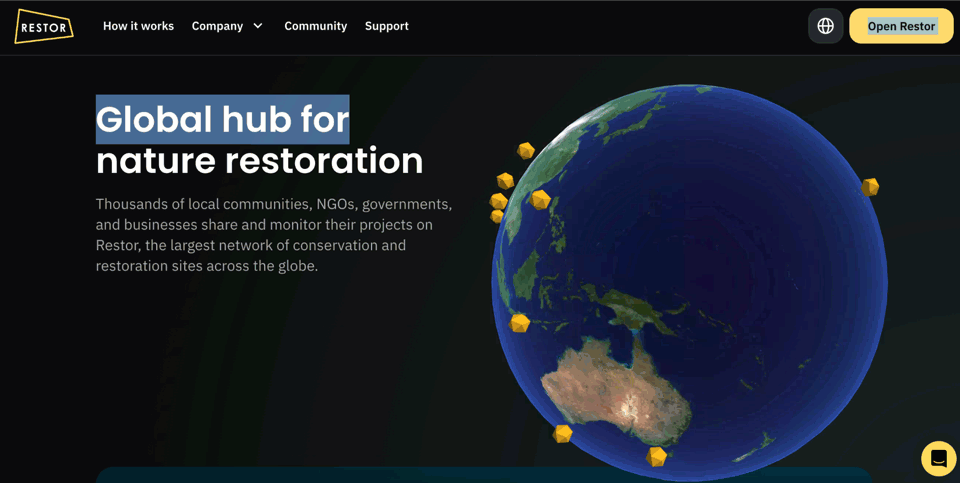
When it comes to reforestation, visualization makers have a lot of questions: “Should we plant in plot A or B?” “What type of tree should we plant?” and “What is the environmental and social impact of this reforestation effort?” Answering these questions requires lots of data and locally-relevant information. Restor was launched in 2021 to help people and organizations decide which trees to plant in the right places by analyzing, monitoring and sharing restoration projects. It’s currently the largest network of conservation and restoration sites wideness the globe.
Restor.eco is powered by global datasets that monitor restoration projects over time. When a user draws the purlieus of a potential restoration project on the site’s map, Restor provides them with relevant and specific metrics well-nigh their site from over 33 datasets touching on biodiversity data such as species richness, native plant species, soil stat and precipitation. Restor moreover provides users with a visual satellite imagery timeline of land changes for the past 10 years, helping them understand the intensity of change, target reforestation efforts to regions in need, and increase the likelihood of a successful reforestation effort.
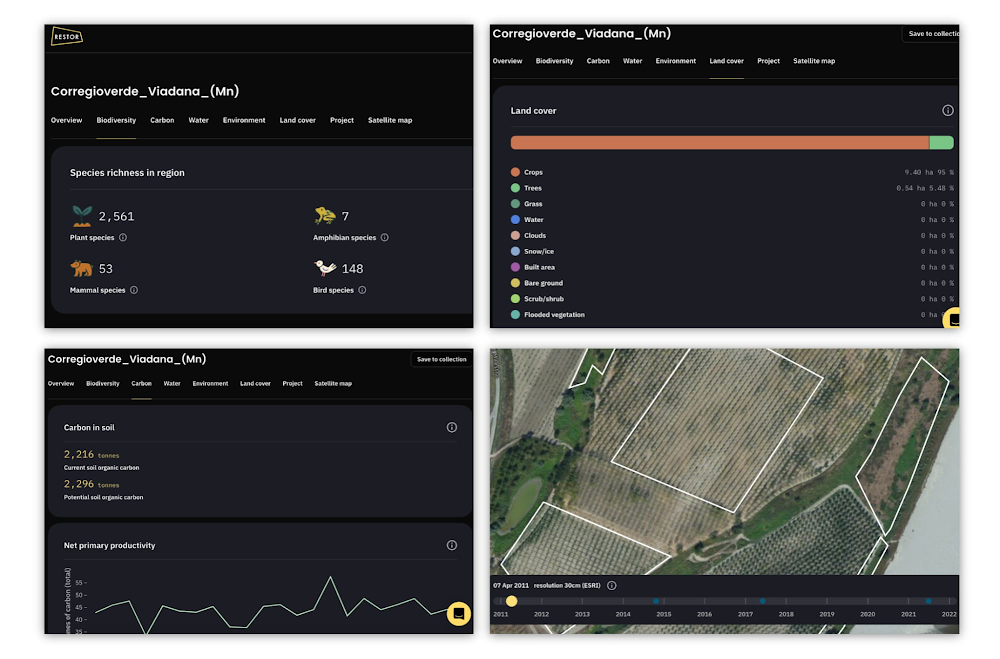
The site moreover serves as a searchable directory, enabling restoration projects of any size to find similar initiatives as well as their donors to find them and learn well-nigh their restoration metrics and plane receive donations.

Additional resources: Costa Rica leading the movement for environmental transparency
Try them
It’s wondrous how far we have come in stuff worldly-wise to use technology to help our biodiversity. Be sure to trammels out these publicly misogynist web applications and share them with your community.
Day 9: On Energy Day, reflecting on the power of partnerships to whop decarbonization
By Caroline Golin, Global Head of Energy Market Minutiae and Policy, Google and Jessica Reinhardt, Global Energy Market Minutiae and Policy, Google
Google’s vision for a cleaner, safer, increasingly resilient world includes a wipe grid. Decarbonizing the world’s electricity system is hair-trigger to fighting climate transpiration but moreover to creating a largest place for all of us to live, work, and play. When Google set the goal to operate on 24/7 Carbon-Free Energy (CFE), we moreover set a transferral to work in partnership, globally, to momentum towards a future where every individual, corporation, municipality and nation could moreover operate on carbon-free energy every hour of every day. That’s why we’ve single-minded to forming partnerships and coalitions throughout the world. Only through joint whoopee will we be worldly-wise to build a cleaner future for all.
As COP27’s Energy Day comes to a close, we’re thrilled to see the launch of new partnerships that promise to grow the 24/7 CFE ecosystem, share learnings, and uplift innovation to slide decarbonization of the world’s electricity grids.
The 24/7 CFE Compact, which we helped launch last year with Sustainable Energy for All (SEforALL) and UN-Energy, welcomed several new signatories during COP27, including C40, Xcel Energy, NUCOR, and Arup, joining a diverse global group of companies, governments, and nonprofits.
We heard from many of our fellow signatories during events hosted by SEforALL at the SDG7 Pavilion. AES and the Wipe Air Task Force, two original signatories, spoke well-nigh the need for innovation in technology and procurement structures to unzip 24/7 CFE, such as the CFE manager model that we spoken older this year. Google Chief Sustainability Officer Kate Brandt joined Scotland’s First Minister Nicola Sturgeon and C40 Managing Director of Regions and Mayoral Engagement Hastings Chikoko to discuss the importance of public-private partnerships in up-and-coming this goal. Yesterday, signatories EDP and Engie spoke on the 24/7 CFE meaty at an event hosted by SEforALL. Today, we were encouraged to see the 24/7 movement protract to gather momentum during an event hosted by meaty signatory NEI, in which The White House’s Council on Environmental Quality spoken a Memorandum of Understanding between the U.S. General Services Administration and Entergy Arkansas for the first 100% 24/7 untried tariff.
While all the signatories will have a role to play in progressive decarbonization, we’re particularly excited to work with C40 in supporting the world’s largest cities on their path to decarbonization. Together, we launched the 24/7 CFE for Cities program, which will help cities from virtually the world start on their journey to 24/7 CFE. The first cities in the program include Paris, London, and Copenhagen, each of which will whop specific pilot projects to support the transition to unwaning carbon-free electricity. This week, we spoken that the program will soon expand into Africa with the support of Google.org.
We’ve moreover seen remoter wonk validation of 24/7 CFE as a decarbonization approach. The International Energy Agency (IEA), the world’s leading global validity on energy issues, released a new report that explores how corporate wipe electricity procurement can slide the transition to decarbonizing electricity systems. By modeling electricity systems in India and Indonesia, the IEA found that hourly procurement reduces stat emissions increasingly than yearly matching, while delivering the full portfolio of technologies needed to decarbonize the unshortened power sector. This is resulting with other recent modeling of 24/7 CFE conducted byPrinceton University andTechnical University of Berlin.
The IEA report moreover offers a comprehensive overview of clean-energy procurement options, with detailed specimen studies of the procurement policy and regulatory barriers in various countries, including many in Asia Pacific. This region has historically lagged overdue the US and Europe in corporate wipe energy purchasing, but that could transpiration with the Asia Wipe Energy Coalition (ACEC) launched at COP27, that Google has helped establish over the past year. ACEC will convene a coalition of influential wipe energy buyers in Asia, in collaboration with sellers and financiers, to work with governments to expand opportunities for wipe energy purchasing and slide investments in wipe energy that can support national decarbonization goals in the region.
This work is much worthier than any one company, and we must all work together to enable 24/7 CFE for everyone. We are hopeful to see so many of our partners working together and squint forward to seeing these partnerships protract to grow wideness the world.
To learn increasingly well-nigh 24/7 CFE and how decarbonizing energy grids can help make the rest of the untried energy transition easier, trammels out this Project Syndicate op-ed by Google Chief Sustainability Officer Kate Brandt and SEforALL CEO Damilola Ogunbiyi.
More from Energy Day: Ren Energy and Google Deject are mapping supply villenage to convert them to renewables
By: Morgan West, Co-founder/Head of Product & Design, Ren Energy
Some corporations have the energy needs and emissions the size of countries. To move the needle on climate change, it’s well-spoken that these organizations must transition from fossil fuels to renewable energy.
The good news is that many corporations have single-minded to reach stat neutrality within the next decade. But they squatter significant challenges in reaching net zero: They often have supply villenage that stretch wideness dozens of countries and consist of thousands of facilities, each with a unique energy market. Structuring renewable energy contracts is nuanced, and many companies lack the resources or knowledge to create them. And with potential regulation of telescopic 3 emissions, companies are urgently looking to write any shortfalls.
Ren enables companies with global supply villenage to source the cleanest energy possible. The Ren Platform solves the ramified financial, technical, and logistical challenges associated with sourcing renewable energy globally. This unlocks forfeit savings and the worthiness to meet stat commitments on time.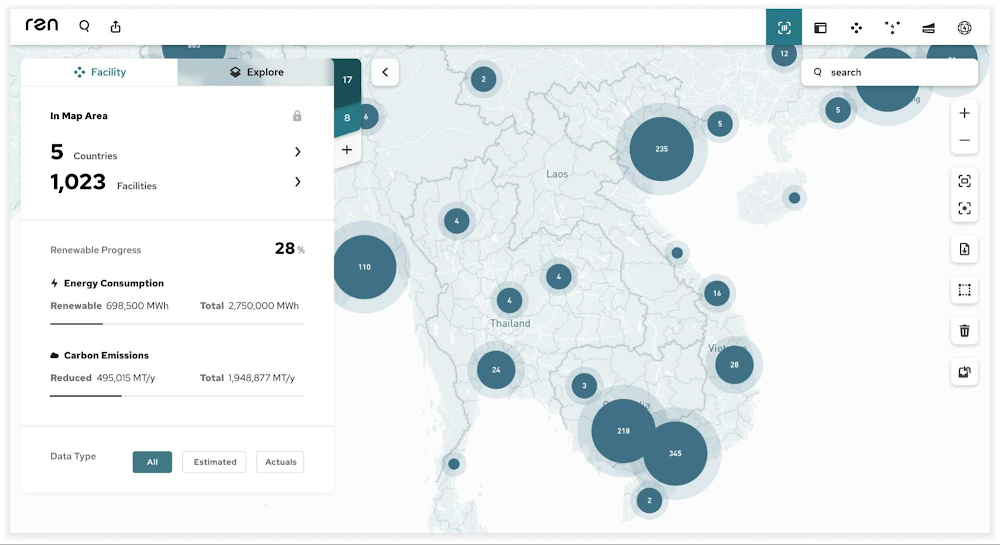
To empower corporations to decarbonize their telescopic 3 emissions, Ren created new tools to help customers finance renewable energy projects. It is much increasingly viable for corporations to go in on large renewable energy deals when there are multiple buyers, expressly when they are sourcing energy in multiple locations to imbricate portions of their supply chain. Ren’s Portfolio Engine generates logical groupings of energy-consuming facilities to highlight the potential energy needs in a particular location. This helps match consumers to other consumers, and then matches developers to a group of consumers that could invest in renewable energy PPAs. These portfolios can be created for a mix of renewable solutions, including joint Power Purchase Agreements (PPAs) and rooftop solar. By generating RFPs in the 250MW range, renewables adoption gets much easier, cheaper, and faster.
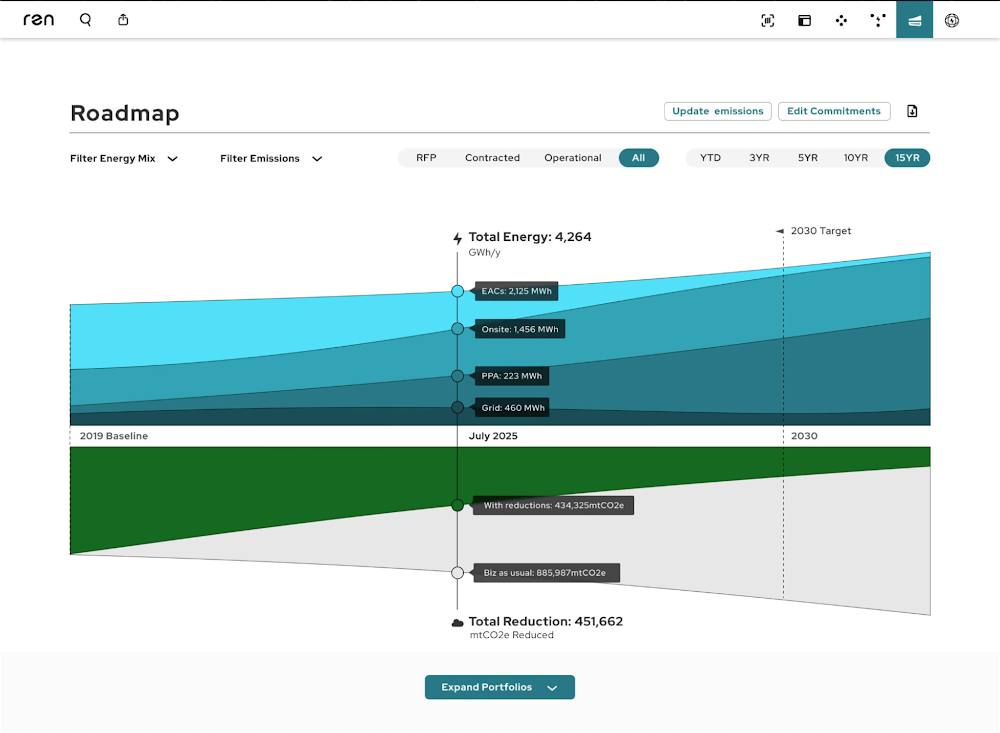
Although renewable energy production is growing, companies can’t uncork to transition to renewables until they understand their current energy consumption and emissions. Historically, corporations could spend time and effort requesting utility bills from suppliers — which was an immense rencontre for global corporations with hundreds or thousands of individual suppliers. Now, through our partnership with Google Cloud, we are worldly-wise to slide that process to a matter of days. By utilizing remote sensing powered by Google Earth Engine, we are worldly-wise to understand details such as towers size and type. With the help of partners like Arbor, we are then worldly-wise to generate highly well-judged emissions estimates based on those models. This joint solution accelerates exponentially the time it takes to source renewables.
As increasingly of our customers invest in renewable energy globally, we see benefits vastitude decarbonization. The factories, warehouses, and distribution centers that largely make up corporate supply villenage are historically located in underserved and underdeveloped areas of the world. The transition to renewables in these regions can provide new jobs and cleaner and increasingly reliable energy infrastructure to these communities.
With 2030 right virtually the corner, and such a massive problem in front of us, there is truly no time to waste. We’re excited to partner with Google Cloud, and unhook the tools, datasets and support for organizations who want to decarbonize their global supply chains, today.
Day 8: On Water Day, a new tool for sustainable management of precious water resources
By Robyn Grimm, Interim Director, OpenET Inc.; Rachel O'Connor, Manager, Climate Resilient Water Systems, EDF; Tyler Erickson, Developer Advocate, Earth Engine, Google
Managing water resources in a sustainable manner is a rencontre on a local to international scale, and is hindered by a lack of detailed data on how water is used wideness the landscape. Regions susceptible to drought throughout the globe, such as the Horn of Africa or the western United States, are experiencing historic challenges. As a specific example, the Colorado River Valley in the US has been in a 23-year megadrought, dropping the Colorado River and the reservoirs withal it to critically low levels. The 2,300-kilometer river serves 40 million people, 2.2 million hectares of irrigated land, and is an important cultural resource to dozens of tribes. As climate transpiration bears lanugo on the Basin, delivering hair-trigger data to the hands of farmers, water managers, and government agencies has never been increasingly important.
A new data tool, OpenET, is utilized by stakeholders wideness the drought-stricken Colorado River Valley to wangle hair-trigger water data and transmute to climate transpiration impacts.
OpenET is an online platform powered in part by Google Earth Engine, and is used wideness sectors to increase climate transpiration resilience and inform increasingly sustainable water management decisions from the field to the basin. This platform provides publicly wieldy evapotranspiration (ET) data — a measure of the value of water consumed by plants as they grow — at a scale of 30x30m.
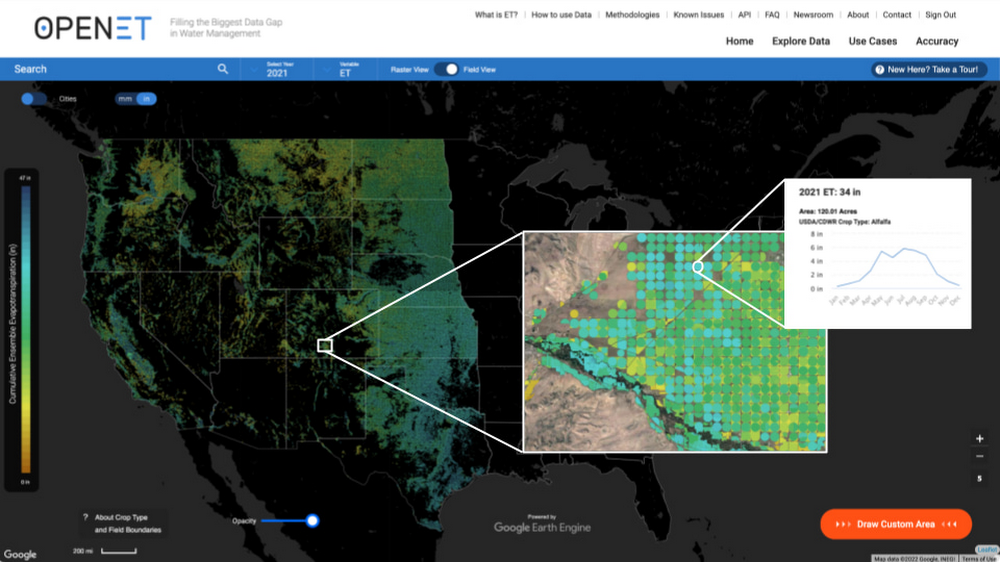
Accurate, timely, and publicly wieldy ET data is direly needed to support efforts wideness the Colorado River Valley to write current water shortages and build a increasingly climate resilient future. The platform is once stuff used locally to help facilitate the transition to a smaller water footprint that allows farmers to protract growing crops and preserves rural agricultural economies.
For example, on a ranch in Colorado, a multi-year collaborative research project is underway to evaluate the potential water conservation and agronomic viability of temporary and compensated irrigation reductions. Data from OpenET will help the team compare water savings on fields with reduced irrigation relative to parcels with regular irrigation. The project will wordplay questions well-nigh how variations in forage species, soil, and groundwater conditions stupefy changes in consumptive water use and yield yields when irrigation decreases. Conservation efforts like these will be vital as climate transpiration continues to momentum water scarcity in the Basin.
OpenET data can moreover help illuminate large-scale changes in water demand and use, enabling agencies and water managers to increasingly quickly transmute management practices to current conditions and make better-informed decisions. In the Upper Basin, state and federal agencies have been using ET data for decades to track how much water is consumed annually and inform decision-making on river management. Previously, these agencies used variegated and sometimes outdated methods to estimate water use that produced incompatible results, making it challenging for water managers and decision-makers to stipulate well-nigh the realities on the ground and powerfully use the data wideness states.
After a nine-year-study, the agencies adopted a satellite-based method that has been made widely misogynist via the OpenET platform — eeMETRIC — as the standard for measuring evapotranspiration and agricultural consumptive water use wideness the Upper Colorado River Basin.
Flows in the Colorado River have declined by nearly 20% in the past two decades, and climate transpiration is expected to reduce flows by an spare 10 to 40%. In basins wideness the world, successful version to the waffly climate will require increasingly publicly wieldy data and tools that foster collaborative decision-making wideness sectors at the velocious pace necessary to meet the moment. Satellite data and cloud-based tools like OpenET are stepping in to meet that demand.
Day 6: For Version & Threshing Day, Atlas AI is taking whoopee to help transmute our agricultural systems to a waffly climate
By Abe Tarapani, CEO, Atlas AI
At COP27 over the weekend, the discussion turned to version and threshing — a fitting combination of topics as they are inextricably linked to one another. Weather-dependent systems such as supplies and threshing are encountering increasingly frequent and lattermost threats, as a result of a waffly climate virtually the world.
Climate-related disasters forfeit the global economy an unscientific $520 billion USD each year, and push 26 million people — including many rural farmers — unelevated the poverty line (UN, 2021). Meanwhile the vast majority of global climate investment is focused on mitigating future emissions — one estimate suggests that only 21% of climate financing currently goes towards version initiatives. That wastefulness must shift, as must the dialogue, in order to focus our limited current resources on increasing global resilience and well-being over the long term.
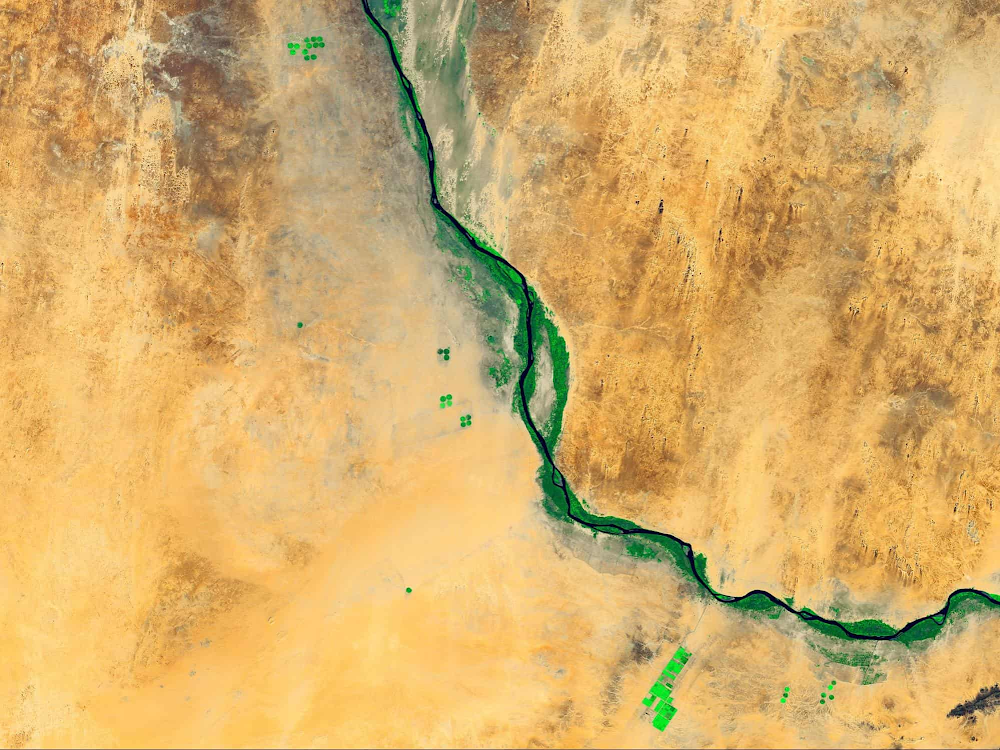
Smallholder farmers are increasingly vulnerable than most considering of how tightly their activities and livelihoods are unfluctuating to weather patterns. Rural, agriculture-heavy regions will be particularly unauthentic by drought, which is expected to transplant 700 million people globally by 2030 (UN). When farmers transplant to find suitable land, they often deforest new tracts, remoter exacerbating environmental changes. In wing to facing displacement, severe weather decreases farmers’ threshing yields and threatens to push them deeper into poverty. In lattermost cases, like the devastating recent floods in Pakistan, unshortened growing seasons have been eviscerated. Farmers may find traditional agricultural land no longer suitable for staple crops such as rice, maize and wheat — the crops that provide a significant portion of the world’s calories. And if they want to transpiration or plicate production, fertilizer or robust seed varietals are in scarce supply, making them inaccessible and/or unaffordable for smallholder communities. Needless to say, humanity faces a global rencontre in adapting our agricultural systems to deal with a waffly climate.

Despite the dire circumstances presented by the whilom statistics, this post is ultimately a hopeful one. Atlas AI is in the merchantry of providing intelligence well-nigh the progress of minutiae and well-being of local communities virtually the world. Our technology serves a range of organizations on the front lines of promoting the resilience and version of farming communities to a waffly climate. We offer three examples:
Finding leverage at the intersections of systems: In partnership with University of Massachusetts Amherst, Rochester Institute of Technology, Carnegie Mellon University, Columbia University and the Kigali Interreact Research Center, and thanks to funding from The Rockefeller Foundation, we are up-and-coming research to inform public policy and investment at the intersection of the agriculture, energy and transportation sectors in Africa. To cite one example of the potential benefits of this research, waffly climate ways less reliable rainy seasons. This can be countered in part by installing irrigation infrastructure, which in turn requires wangle to electricity. The platform ripened through this research aims to identify where energy and irrigation investments might be largest located, coordinated and sequenced, in order to promote local economic development.
Building largest supply villenage for agricultural inputs: MyAgro is a non-profit organization that promotes wangle to climate-resilient seeds and fertilizers as well as training to smallholder farmers, with a mission of moving farmers out of poverty in Africa. MyAgro is worldly-wise to use Atlas AI’s platform to identify the rural farming communities weightier positioned to goody from MyAgro’s programs and to track progress in delivering inputs to those communities over time. In this respect, technology can promote the scalability of climate resilience programs and ensure that limited resources are deployed to the greatest potential impact.
Improving monitoring of agricultural systems through remote sensing: The 50x2030 initiative aims to increase the topics of 50 low and lower middle-income countries to produce, analyze, interpret, and wield data to decisions in the agricultural sector that support rural minutiae and supplies security. In partnership with the Living Standards Measurement Survey (LSMS) team of the World Bank, Atlas AI is supporting the scientific research voucher of the initiative by evaluating weightier practices for the use of remote sensing (e.g., satellite imagery) wringer for monitoring yield productivity at a national scale. This work to understand the ongoing effects of climate on local threshing systems will be essential to visualize and transmute to the effects of climate on smallholder ecosystems.
Adaptation needs in the developing world may reach as upper as $340 billion a year by 2030 (UN, 2022). Atlas AI’s vision is to enable an ongoing and hyperlocal understanding of the minutiae needs of every polity on the planet so that this investment can be targeted and monitored in service of the greatest impact.
Day 5: On Decarbonization Day new research shows the potential impact of digital technologies
By Justin Keeble, Managing Director of Global Sustainability, Google Cloud
In many ways, Europe is at the forefront of addressing the climate crisis. Not only have European leaders been inside to the ongoing discussions at COP27, Europe has once single-minded to achieving a net-zero stat economy by 2050. This goal calls for investments in electricity infrastructure vacated in glut of EUR 560 billion, with funds for millions of solar panels, 10 million heat pumps in homes, buildings and factories, and putting 30 million zero-emission vehicles on the road by 2030.
This poses an opportunity, as constructive whoopee now can create a leadership model for other countries and uncork a virtuous trundling of innovation and lower financing for lower stat models.
Sustainability-oriented digital companies should partner with European companies and governments to put in place digital technologies and solutions that offer speedy, affordable climate mitigation. A recent study from Implement Consulting Group (ICG), vicarious by Google, provides some ways to make this work.
Take the largest carbon-emitting sectors of the EU economy, like transportation, construction and towers operations, manufacturing, and agriculture. Collectively they produce two-thirds of EU emissions, yet there are many opportunities to quickly monitor and lower the value of stat they emit. Achieving a net-zero economy wideness the EU will require perhaps a 25% reduction in greenhouse gasses. Focusing on applying digital efficiencies to the pursuit sectors' existing systems can reduce emissions in ways that can scale up, while having an winning social cost.
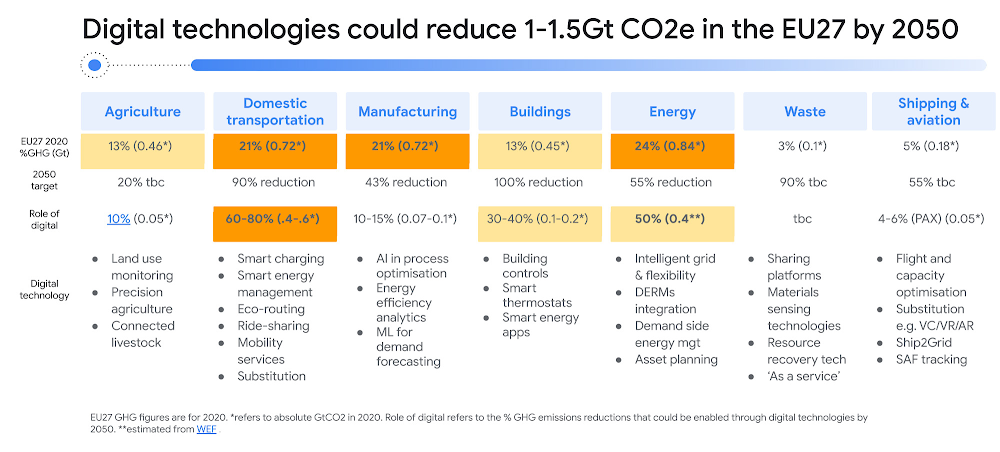
The good news is that, in each of these sectors, there are once promising examples of digital technologies that are reducing emissions. For example, the transport sector has constructive technologies for charging, energy management, ride sharing, mobility services, among other areas. Google Deject has moreover worked onlogistics optimization, squadron routing, andEV optimization, which have a proven record of saving energy and wearing stat use.
In towers management, we can wield largest energy controls, thermostats, air quality monitoring and smart parking. To that end, Google’sMesa product helps commercial buildings reduce stat emissions, and recently widow leak detection and air quality monitoring to its capabilities.
In energy, deject technology can help with grid management, smart meters, windfall planning tools, solar propensity modeling, and methane tracking. There’s moreover wind sublet productivity optimization, for whichGoogle Deject recently teamed up with European utility ENGIE, using AI to optimize the value of ENGIE’s wind portfolio.
Finally, manufacturers can employ AI in process optimization, model production lines for greater efficiency, and use machine learning for demand forecasting.Ford Motor Visitor worked with Google Cloud to implement a data platform operating on increasingly than 100 key machines unfluctuating wideness two plants, streaming and storing over 25 million records per week. This gives Ford violating data-driven insights to help its manufacturing plants wilt plane increasingly efficient.
These technologies vacated will not solve the EU's stat problem, of course, but they can go a long way towards working through the problem, enabling progress at a difficult moment and inspiring companies in the EU and elsewhere to take remoter steps. According to ICG's study, decarbonization happens faster in heavily digital economies, with no sacrifice of economic growth. Between 2003 and 2019 the most digital economies in the EU reduced their greenhouse gas (GHG) by 25% between 2003 and 2019 and grew their economies by 30%. Meanwhile, the least digital economies reduced their GHG emissions by just 18%, and grew their economies by 18%.
Ultimately, industries wideness Europe and the world are stuff presented with a mandate and an opportunity to step up and lead the tuition in achieving society’s climate objectives. Digital technologies can help enterprises reduce emissions and stave off the worst effects of climate transpiration and create a increasingly secure energy future for all. Fortunately, businesses don’t have to go it alone. Wideness industries, they can turn to technology partners like Google Deject to work with them not just to decarbonize their own IT footprints, but to help pinpoint the unique opportunities for rewiring their businesses to slide their decarbonization goals.
More from Decarbonization Day: mCloud shares how visualizing methane emissions helps windfall managers stop leaks
By Barry Po, Ph.D., Chief Marketing Officer & EVP, mCloud
On November 11, all sustentation at COP27 was focused on decarbonization — surely the most hair-trigger step in reducing anthropogenic impacts on the global climate. As the world struggles to find ways to reduce or sequester the emissions causing climate change, it's heady to see new digital tools coming into play to help energy-intensive industries meet this urgent challenge.
Together with our partners at Google Cloud, mCloud is delivering some of those new digital tools. Leveraging Google Cloud, we offer AssetCare™, a portfolio of windfall performance management solutions combining the deject with digital twins and AI to optimize the performance, reliability, and sustainability of energy-intensive assets.
We offer specific solutions to tackle methane emissions at scale in process industries. Methane has 80 times increasingly warming power in the near-term than stat dioxide and reducing its impact is widely considered low-hanging fruit for climate transpiration mitigation. At last year's COP26 over 100 countries signed a pledge to cut methane emissions, and this morning President Biden made a commitment to relentlessly target methane reduction. At mCloud we’re equipping energy providers with the AI-driven tools they need to manage and momentum whoopee in the field, at facilities where the leaks unquestionably happen. This is made possible through unfluctuating apps that enable customers to locate, measure and winterkill leaks at every level — from the full portfolio lanugo to individual pieces of equipment.
Our worthiness to find methane emissions underscores the inside role the deject has to play in emissions management. Through AssetCare, we use Google Deject and Google Earth Engine to visualize petabytes of methane emissions data from European Space Agency satellites in orbit. From macro to micro, operators zoom lanugo to the field resources they manage, where sensors from AssetCare continuously stream equipment-level emissions data to the deject from oil and gas facilities anywhere in the world — something only possible with the scale and compute of the cloud.
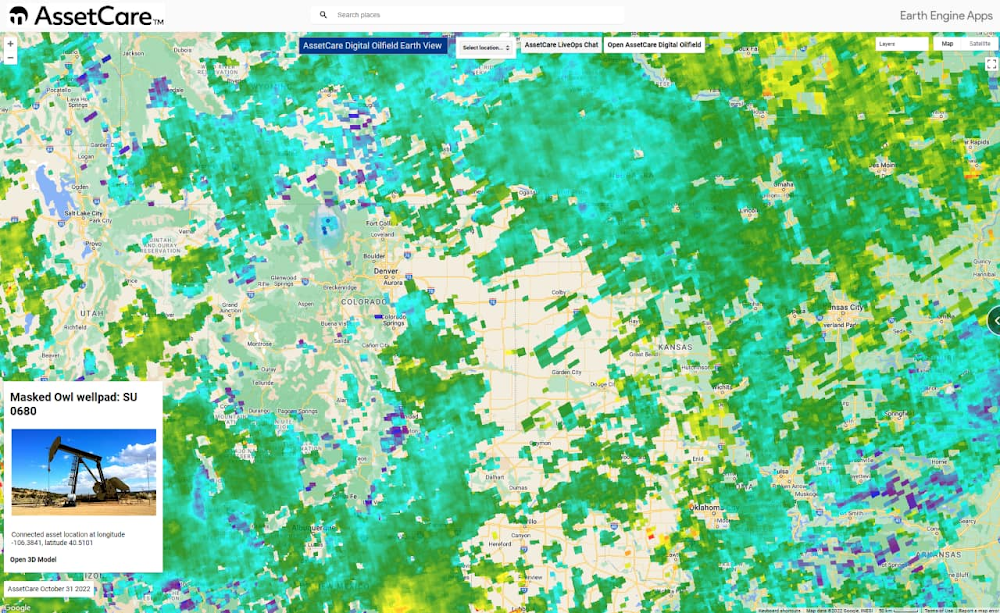
Our connectivity detects and flags real-time methane leaks from pumps, valves, and other worldwide sources at gas plants and well pads. Data from these resources are streamed to Google Cloud, where they are analyzed using mCloud’s industrial AI and visual analytics. Digital twin capabilities can provide plane increasingly insights into equipment problems. And all this information is then consolidated and presented to operators in an interface wieldy as a verifiable single source of truth.
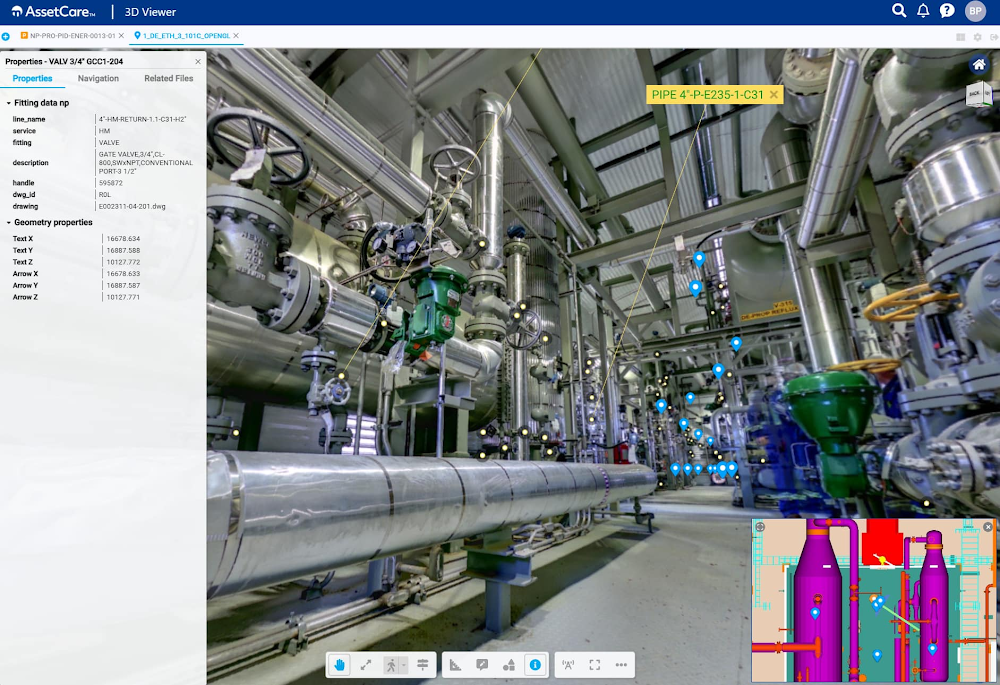
Through AssetCare, unfluctuating workers in the field can wangle real-time information and identify and stop methane leaks increasingly quickly and efficiently than intermittent equipment checks — in hours instead of weeks or months. Where field workers once checked each well and piece of equipment manually, we digitize monitoring and provide our customers with the worthiness to manage portfolios virtually the clock that consist of many thousands of wells and pumps.
With the cloud, workers can interreact virtually with offsite experts to resolve problems and optimize equipment performance. They can moreover largest prevent unplanned shutdowns that sometimes require the ‘flaring’ of stored hydrocarbons for safety reasons.
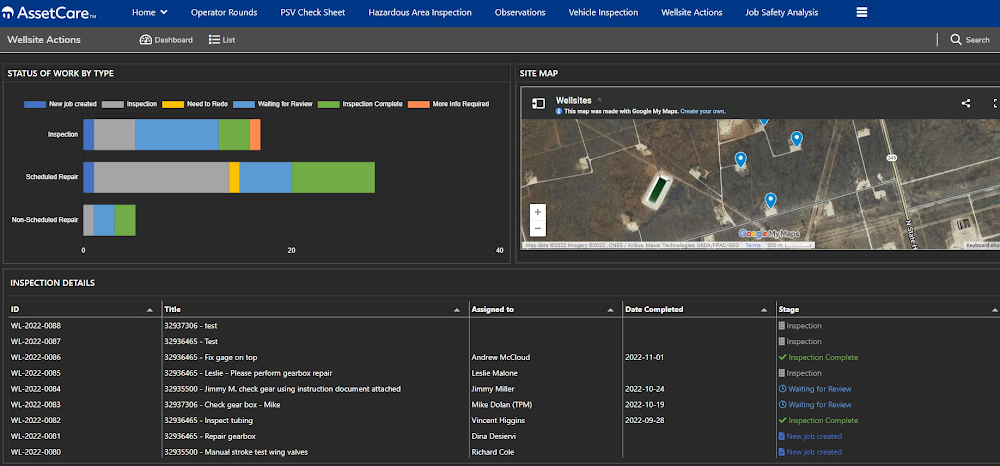
One increasingly tangible goody of stuff cloud-based is that it provides the foundation for violating information based on verifiable data. The data comes from a single source rather than stuff pulled from multiple systems or platforms. It’s not stuff unscientific based on calculations or averages over months or years. We can now rely on data, not estimates, educated guesses, or speculation. As we’re showing with our solutions, we’ve taken opinion out of the equation and given producers the worthiness to demonstrate real emission reductions and how they’re directly contributing to vitiation efforts.
Across oil and gas basins in the U.S. and globally, these new digital technologies can enable significant emission reductions. By putting the tools to snift and correct methane leaks in the hands of producers, cloud-based solutions make them partners in the decarbonization that we all need.
Day 4: On Science Day, 18 new researchers receive Climate Innovation Rencontre grants
By Nicole DeSantis, Google Deject for Public Sector
Addressing the challenges of climate transpiration will require a largest understanding of our environment and new technologies to help transition to a decarbonized global economy. Which is why at Google we protract to support new climate research, tech entrepreneurs and startups, with investment and wangle to digital technologies to slide their innovations. Older this morning at COP27, the United States and Egypt spoken the winners of ClimaTech Run Global Competition, a startup competition that Google co-sponsored. Today we are moreover delighted to share an update on our research grants, introducing the first cohort of Climate Innovation grant recipients: 18 researchers from wideness the globe who will receive a total of increasingly than $500K in Google Deject research credits for their innovative projects.
These grantees are part of the Climate Innovation Challenge, spoken in April 2022, to promote groundbreaking research in global resilience and sustainability. The program allows individual climate researchers in higher education and not-for-profit research organizations to wield for Google Deject credit grants of up to $100,000 to slide their projects with Google’s state-of-the-art data analytics and strained intelligence (AI) deject services. Here are a few examples of their work:
Spurthy Maria Pais at the National Institute of Technology in Karnataka, India is using Google Deject credits to pursue machine learning and deep learning techniques to unriddle high-resolution atmospheric stat dioxide and fill in data unmeasured by satellites.
Charles Reillyat Harvard University of Cambridge, Massachusetts is developing a platform for supplies preservation using naturally well-healed and nutritionally salubrious chemical preservatives that can be tuned to specific applications to subtract supplies spoilage from sublet to market sustainability.
Farnoush Banaei-Kashani at the University of Colorado, Denver is designing an end-to-end framework for climate and earth scientists to develop, train, evaluate, and serve deep learning models to virtuously classify sea ice in polar regions. The framework will be made misogynist as unshut source software for public use.
Other researchers are studying plant genomics, resources for land management in Australia, and populations displaced by climate transpiration in East Africa, applying machine learning to predict global temperature changes, and using big data tools to unriddle risk management for climate disasters.
To supervise these awards we partner with environmental organizations to help evaluate proposals and select participants. Our first partner was the National Science Foundation (NSF) AI Institute for Research on Trustworthy AI in Weather, Climate, and Coastal Oceanography (AI2ES). The Climate Innovation Rencontre projects all share a transferral to collaboration between disciplines and institutions, as well as sharing data and resources.
To wield for a Climate Innovation Rencontre grant to slide your research in the climate sciences, click here.
Day 3: At Finance Day, exploring climate risk wringer and ESG entity extraction
By Jeff Sternberg Director, Office of the CTO
Finance is once then a top-level goal at COP27, where leaders are emphasizing the importance of mobilizing finance for climate mitigation, climate adaptation, and to meet the sustainable minutiae needs of developing countries. The figures are sobering. Estimates from a new report launched for COP27 suggest that the world will need to mobilize $1 trillion a year in external finance for emerging and developing countries, other than China.
Much of this finance will come from the private sector — but this calls for much greater transparency well-nigh where this money is allocated, how untried claims virtually its using are made and tighter controls on warranty and verification.
We moreover heard last week from the World Economic Forum that towers climate resilience is a $2 trillion market opportunity and so understanding where to target investment in version is moreover a key imperative for climate finance.
For COP26 last year, I wrote well-nigh how technology is progressive sustainable finance. Since then, a group of us in Google Cloud’s Office of the CTO (OCTO), have explored how we can help to equip the financial services sector with the tools to respond to these challenges and opportunities in two key areas: Environmental, Social, and Governance (ESG) and climate risk adaptation.
Accelerating ESG process transformation with AI
Companies, investors, and regulators protract to focus on ESG to propel sustainability. Driven by regulatory instruments like the SEC’s proposed rules to enhance climate-related disclosure, plus interest from stakeholders, including customers and employees, businesses and financial institutions are progressive implementation of ESG processes.
Leaders are realizing that ESG must transform from the current manual, inefficient workflows to increasingly automated, efficient, and reliable systems. As one example, the tools for stat and greenhouse gas written — including measurement, mitigation analysis, and reporting — will need to wilt just as streamlined and robust as enterprise financial technology systems that have taken decades to evolve. And this will need to happen in the next few years.
One way we can whop ESG automation is through AI. Currently, ESG information is often disclosed in unstructured digital documents, such as PDF corporate sustainability reports and supplier surveys. ESG analysts often need to drill lanugo to the cadre ESG metrics, such as Telescopic 1, 2, and 3 greenhouse gas emissions, for benchmarking and impact measurement. Rather than manually reading through thousands of pages of PDFs, AI tools can help these analysts build machine learning models to pericope ESG metrics automatically.
In OCTO, we recently performed an experiment to do precisely this. We ripened a data pipeline and machine learning model using Google’s newly launched Document AI Workbench by towers a Custom Document Extractor that extracts Telescopic 1 greenhouse gas emissions metrics from sustainability reports. The experiment showed promising results: 0.752 F1 score with a training set of 601 labeled documents and a test split of 60 documents. See the screenshots of our experiment below.
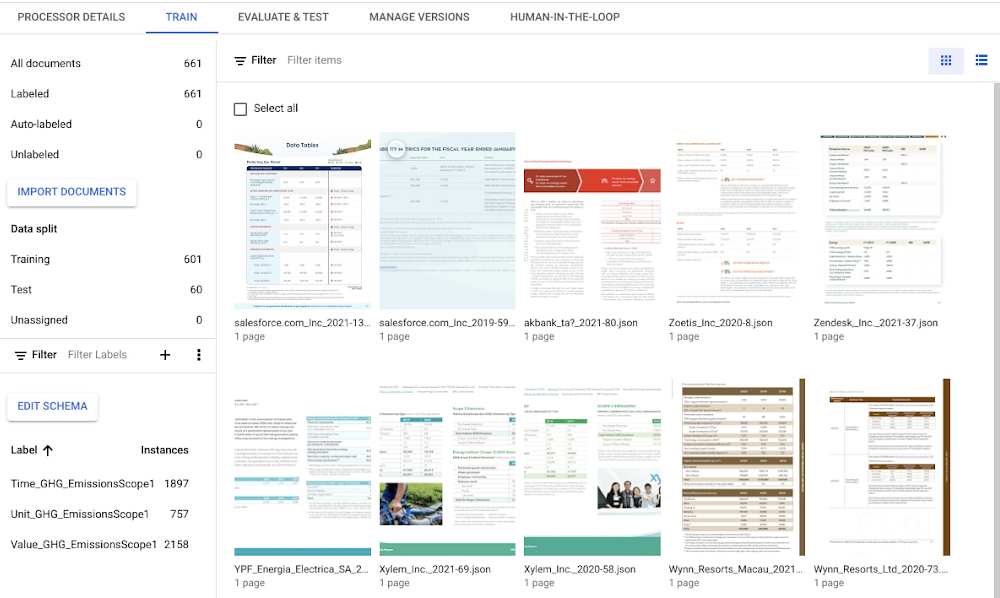
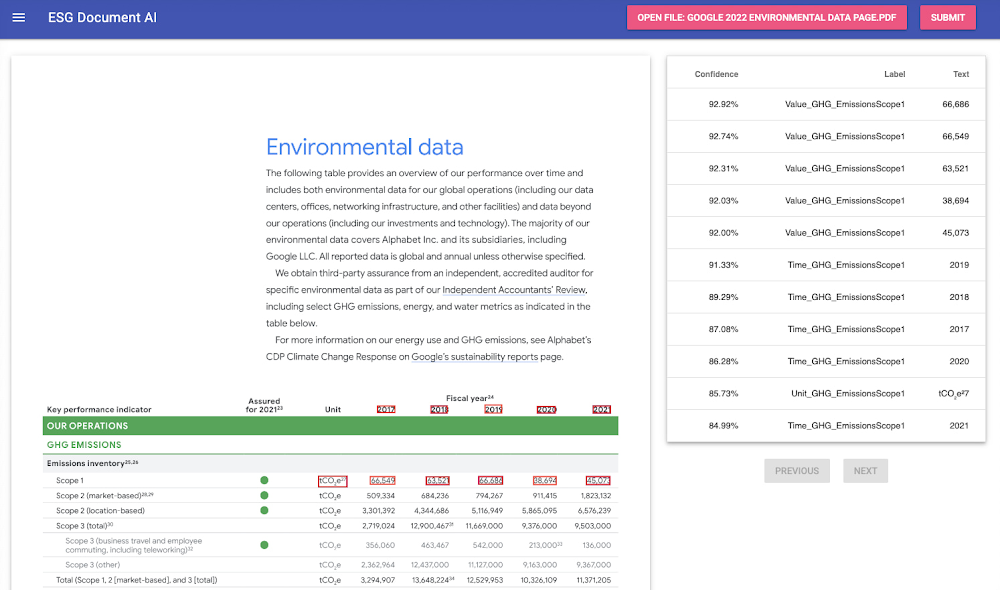
Improving climate transpiration version through geospatial climate risk analytics
A key finance priority for COP27 is scaling up financing for climate version and resilience. This year, we have seen major heat waves, floods, and severe storms that impacted people, businesses, and economies virtually the world. It’s well-spoken that everyone can goody from largest understanding climate risks.
Geospatial technology has wilt increasingly sophisticated in recent years. Wide satellite imagery and remote sensing methods have enabled detailed wringer of these climate-related physical risks. One such technology is Google Earth Engine.
Over the past decade, Earth Engine has enabled academics, scientists, and NGOs to advance climate research, monitor global forest loss, protect and restore freshwater ecosystems, and explore other sustainability goals. This year, we made Earth Engine available to businesses and governments worldwide in Google Deject to help these organizations solve their sustainability challenges.
This integration unlocks some powerful geospatial tampering techniques. For example, while Earth Engine enables wide “raster” (imagery) analysis, Google BigQuery excels at “vector” (points, polygons) operations on relational data. Put them together and you can query satellite imagery with SQL.
We’re starting to see new sustainability offerings using these approaches. In June, we introduced two offerings with Climate Engine and CARTO to help public sector organizations largest understand climate risks and increase their resilience with geospatial technology. And in July, we launched a portfolio climate risk analytics diamond pattern with RS Metrics and Infosys that demonstrates how financial services institutions can use deject tools to identify, analyze, report, and monitor climate risks associated with physical hazards in their lending and investment portfolios.

Day 2: From yearing to action: supporting national commitments on climate transpiration with technology
By Dominic Jones, Deject Sustainability Government Affairs and Public Policy
As policymakers meet in Sharm El-Sheikh, Egypt for COP27, they’re discussing how nations can unite to limit global warming, respond to the impacts of climate transpiration on the built and natural environment, support developing countries through climate finance, and build consensus with input from various stakeholders to unzip tangible results. We believe collaboration and innovation will be essential over the next ten years, and the discussions at COP27 will be key in progressive this.
Coming out of COP26 last year, we saw a scaling up in yearing from a range of stakeholders, and we are proud to be a partner in their mitigation and version efforts and in progressive whoopee wideness our own operations, with our partners and end consumers. For example, in a recent report the International Energy Agency found that hourly matching of energy consumption with carbon-free energy sources can reduce stat emissions increasingly than yearly matching, bringing a much higher value to the electricity system. Google has led in this regard by focusing our own efforts on decarbonizing our electricity supply at all hours and in all regions through our 24/7 carbon-free energy goal and by supporting organizations like Sustainable Energy for All and the megacosm of time-based energy symbol certificates which Google has been pioneering with partners wideness the world to increase wangle and reduce the financing of hourly procurement.
At Google Cloud, we work with governments, cities, businesses and NGOs to offer transformative technologies that support their climate ambitions. Many countries have set policy measures that set the table for historic emissions reductions, and we’re at COP27 to listen and understand how digital technologies can protract to play a key role in enabling whoopee and tracking progress.
Adapting to a waffly planet will require policymakers to understand a ramified set of data inputs and modeling outcomes. Innovative tools running on the cleanest deject in the industry can enable them to do just that.
This is the defining decade for climate action, and cloud-based technologies will be essential as we move from yearing to action.
Day 1: Measurement, materiality, equity: the conversations we’re looking for at COP27
By Chris Talbott, Deject Sustainability Lead
It’s a wrap on day 1 of COP27, where nations, corporations, NGOs and individuals have all come to discuss what we collectively need to do in order to preclude the worst consequences of climate change. Incoming COP president Sameh Shoukry recognized the massive mobilization of communities, young people, women, and local governments, underscoring that we still have a endangerment to overcome this threat. In the opening address, UN Climate Transpiration Executive Secretary Simon Steill, asked governments to focus on three hair-trigger areas to be successful:
Accelerate the shift from negotiations to implementation
Ensure progress in areas like mitigation, adaptation, finance and loss and damage
Enhance transparency and accountability
At Google Cloud, we’ve been working with our customers to slide sustainable transformations using deject technology. In the past year, it’s been incredible to see the momentum in every industry to turn commitments into real actions. But as we learned in our recent survey of global merchantry leaders, while there is widespread yearing to gainsay climate change, they still squatter significant challenges in understanding whether their efforts are having an impact. While 96% of organizations had at least one program in place related to sustainability efforts, only 36% had measurement tools to track their impact.
Measurement is an expressly big rencontre in the squatter of increased scrutiny over greenwashing and demands for transparency. Which is why I’m looking forward to hearing from those leaders who can demonstrate the benefits of definitive climate action, and set an example for others to follow. At Google Deject we’re proud to partner with industry leaders who are urgently measuring the impact of deject technologies versus their climate goals. For example, Salesforce has reduced its deject stat emissions for unrepealable workloads by up to 80%; Carrefour reduced energy consumption by 45% by moving from on-premises data centers to our public deject infrastructure; and Lufthansa cut Co2 emissions by an unscientific 7,400 tons per year, by towers a AI-enabled data platform to increase operational efficiency.
Another part of COP that I really fathom is the daily themes — from finance to adaptation, energy to biodiversity. These days highlight how the climate challenges faced by each industry are unique, how solutions will need to be industry-specific and why we need to focus our efforts on where the impact will be the greatest. In our work with deject customers, this often shows up in materiality discussions, which ensure that we wield deject technology to the parts of their merchantry where it will have a significant positive impact. The work with Lufthansa, Carrefour and Salesforce are unconfined examples of projects that would score well on a materiality assessment, and I squint forward to learning well-nigh the successes that other companies, NGOs and nations have achieved.
Last week, Google shared our efforts to use AI to write the climate slipperiness and spoken the new FloodHub, a platform that displays inflowing forecasts to help at-risk communities prepare. The effects of climate transpiration will be felt unduly throughout the globe, and increasingly by underrepresented and underdeveloped communities. AI running in the deject is illuminating potential disparities, like local air quality differences wideness New York State, and helping leaders craft policies to write them. I hope we can learn increasingly from the COP27 polity well-nigh efforts to largest identify and support at-risk global communities.
Keep us bookmarked and trammels when with us often to hear perspectives from onsite at COP and from climate and industry experts wideness our teams. And don’t miss the Youtube livestream of the event.



